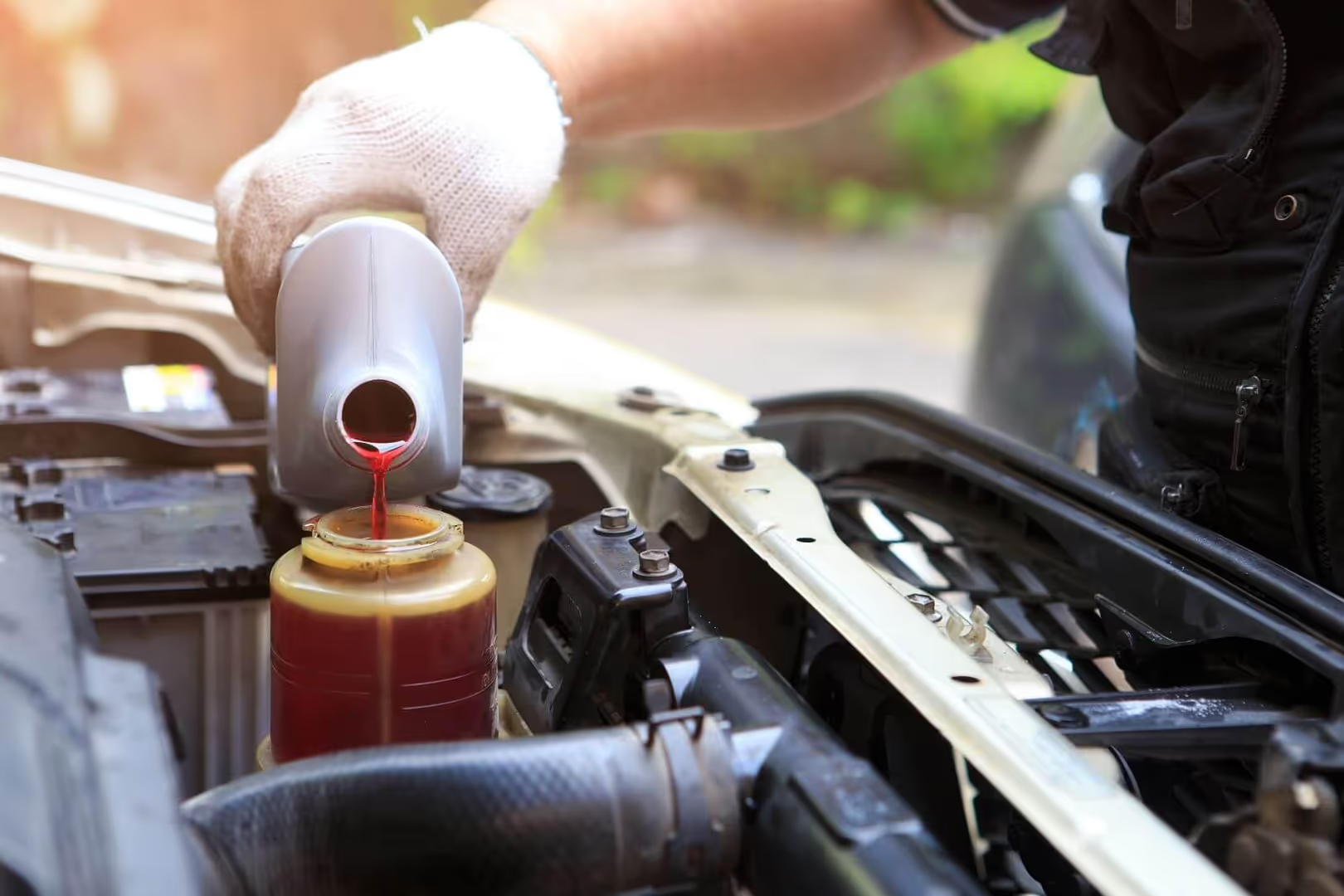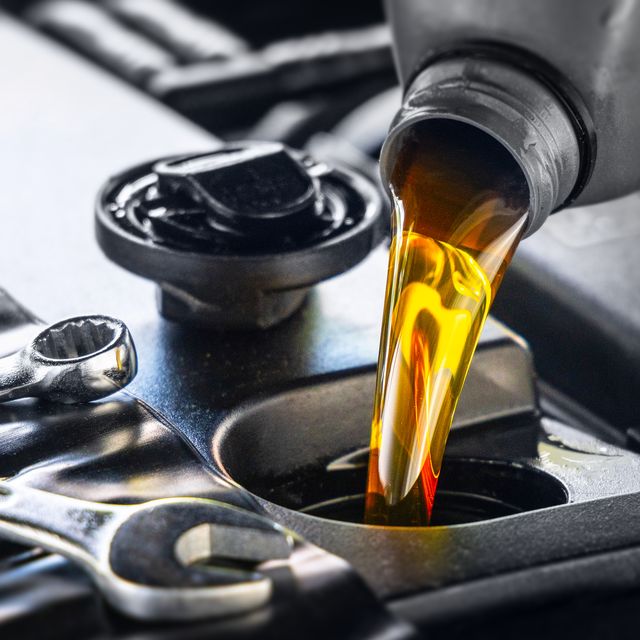Transmission fluid is the lifeblood of a vehicle’s drivetrain. It lubricates internal components, cools moving parts, and maintains hydraulic pressure for gear shifts. Every time the transmission operates, the fluid faces friction, heat, and oxidation. Over time, it breaks down, collects contaminants, and loses viscosity. Understanding how often to change transmission fluid ensures smooth performance, long transmission life, and reduced repair costs.
Neglecting fluid service is one of the main reasons for transmission failures. Industry data from automotive service networks shows that over 70% of transmission breakdowns are linked to fluid neglect.
This guide explains the exact frequency for changing transmission fluid across transmission types, driving styles, and vehicle categories supported by data, expert maintenance logic, and real-world intervals.

What Is Transmission Fluid?
Transmission fluid is a specialized lubricant formulated to handle high heat and pressure within a gearbox. It serves multiple mechanical functions:
-
Lubrication: Reduces friction between gears and bearings.
-
Cooling: Transfers heat away from internal components.
-
Hydraulic action: Enables clutch pack engagement and shift timing.
-
Protection: Prevents oxidation, corrosion, and varnish buildup.
Types of Transmission Fluid
Different vehicle systems require specific fluid formulations:
-
Automatic Transmission Fluid (ATF) – Contains friction modifiers and detergents.
-
Manual Transmission Fluid (MTF) – Typically a heavier oil designed for gears.
-
CVT Fluid – Made for continuously variable transmissions, which operate under constant tension.
-
Dual-Clutch Fluid (DCT) – Combines properties of gear oil and hydraulic fluid for electronically controlled systems.
Each type has its own service interval, determined by heat load, design, and manufacturer specifications.
Why Transmission Fluid Needs to Be Changed
Every transmission fluid degrades over time due to:
-
Heat cycles from normal operation
-
Metal particle accumulation from gear wear
-
Oxidation and varnish formation
-
Loss of frictional integrity in clutch packs
When fluid deteriorates, shifts become sluggish or harsh. Prolonged neglect can cause overheating, seal damage, and complete transmission failure.
A single fluid change costs between $125–$250, while a full transmission rebuild may exceed $3,000–$6,000. Preventive service is a fraction of replacement cost.
How Often to Change Transmission Fluid: General Intervals
| Transmission Type | Normal Conditions | Severe Conditions | Notes |
|---|---|---|---|
| Automatic (Conventional) | 60,000 – 100,000 miles | 30,000 – 50,000 miles | Follow OEM schedule; more frequent in heat/towing |
| Manual Transmission | 30,000 – 60,000 miles | 15,000 – 30,000 miles | Check for gear oil viscosity grade |
| CVT (Continuously Variable) | 30,000 – 60,000 miles | 20,000 – 40,000 miles | Fluid critical to belt/cone operation |
| DCT (Dual-Clutch Transmission) | 40,000 – 60,000 miles | 25,000 – 40,000 miles | Sensitive to contamination |
| Heavy-Duty/Commercial | 25,000 – 45,000 miles | 15,000 – 30,000 miles | Based on load cycles and torque output |
Factors That Affect Transmission Fluid Change Frequency
1. Driving Style and Conditions
Driving conditions influence fluid degradation more than mileage.
-
Stop-and-go traffic generates constant heat.
-
Mountainous terrain increases torque and load.
-
High-temperature regions accelerate oxidation.
-
Towing or hauling stresses the transmission.
-
Short urban trips prevent fluid from reaching optimal temperature, allowing moisture buildup.
Under these conditions, changing fluid every 30,000–45,000 miles prevents early failure.
2. Vehicle Age and Transmission Design
Modern transmissions are more efficient but operate at higher pressures. Older units require more frequent fluid changes due to less thermal control.
Newer automatics with 8-, 9-, or 10-speed gearboxes often specify longer intervals — but they still benefit from proactive maintenance at 60,000 miles.
3. Fluid Type and Quality
Synthetic fluids last longer and maintain viscosity stability under heat. Conventional fluids oxidize faster.
Always use the manufacturer-approved specification (e.g., Mercon V, Dexron VI, ATF+4, CVT-NS2, or DW-1).
4. Transmission Usage Patterns
-
Daily city driving → more heat cycles per mile.
-
Highway cruising → cooler operation, longer life.
-
Commercial delivery → constant shifting, shorter fluid lifespan.
How to Check Transmission Fluid Condition
To determine when fluid needs replacement, visual and physical inspection helps.
Step by Step Check
-
Park the vehicle on level ground.
-
Start the engine and let it idle.
-
Pull the transmission dipstick (if equipped).
-
Wipe and reinsert to check level and color.
Fluid Condition Indicators
-
Bright red and transparent → healthy fluid.
-
Brown or black with burnt smell → oxidized fluid.
-
Milky fluid → coolant contamination.
-
Low level → possible leaks or consumption.
Modern sealed transmissions may require professional diagnostic tools to check fluid temperature and condition through a fill plug or scanner.
Signs It’s Time to Change Transmission Fluid
Clear indicators that fluid replacement is due include:
-
Delayed or slipping gear engagement
-
Rough or jerky shifting
-
Overheating transmission warning light
-
Vibrations or whining noises during acceleration
-
Noticeable fluid leaks under the vehicle
-
Reduced fuel efficiency
If any of these appear before the scheduled mileage, change the fluid immediately. Timely action prevents component wear and hydraulic loss.
Transmission Fluid Change vs. Transmission Flush
There are two primary methods of service:
1. Drain and Fill
-
Removes about 40–60% of old fluid.
-
Recommended for routine maintenance.
-
Lower risk for older transmissions.
-
Typically requires 4–7 quarts of new fluid.
2. Full Flush or Exchange
-
Uses a pressurized machine to replace up to 95% of fluid.
-
Removes sludge and metal particles.
-
Can cost 2× more but ensures cleaner internals.
-
Best for mid-life transmissions in good condition.
Cost Comparison Table
| Service Type | Average Cost (USD) | Time Required | Fluid Quantity |
|---|---|---|---|
| Drain & Fill | $80 – $150 | 30–45 minutes | 5–7 quarts |
| Full Flush | $150 – $300 | 45–60 minutes | 12–22 quarts |
See More: Home Theatre Power Manager: Ultimate Guide for Reliable & Clean Power
Step by Step: How to Change Transmission Fluid
For Experienced DIY Owners
-
Warm the vehicle to operating temperature.
-
Lift the car securely with jack stands.
-
Place a drain pan under the transmission.
-
Remove the drain plug or pan bolts.
-
Allow old fluid to drain completely.
-
Clean the pan and replace gasket/filter.
-
Refill with OEM-specified fluid.
-
Start engine and check for leaks.
-
Check fluid level while warm.
This procedure applies mainly to vehicles with accessible service ports. Always confirm torque specs and fill quantities in the owner’s manual.
Manufacturer Recommendations Snapshot
| Manufacturer | Transmission Type | Recommended Interval |
|---|---|---|
| Toyota | AT/CVT | 60,000–100,000 miles |
| Honda | AT/CVT | 45,000–60,000 miles |
| Ford | AT | 60,000–100,000 miles |
| Chevrolet | AT | 45,000–60,000 miles |
| BMW | ZF AT | 60,000–80,000 miles |
| Hyundai | AT | 60,000 miles |
| Nissan | CVT | 30,000–50,000 miles |
These intervals serve as an average industry reference. Always verify for specific models and fluid specifications.
Common Myths About Transmission Fluid
Myth 1: Transmission Fluid Never Needs Changing
Some vehicles advertise “lifetime” fluids. However, heat and friction degrade even the best synthetic fluids. “Lifetime” refers to the design life of the fluid under ideal conditions — not actual vehicle life.
Myth 2: Changing Fluid in an Old Transmission Causes Failure
If done correctly with the proper fluid, changing fluid cannot damage a transmission. Problems occur only when contamination is extreme and a flush dislodges debris.
Myth 3: All Transmission Fluids Are the Same
Every brand and model requires specific fluid chemistry. Mixing incompatible fluids can destroy internal seals and clutch packs.
Benefits of Regular Transmission Fluid Changes
-
Improved shift quality and smoother operation.
-
Lower operating temperatures, preventing overheating.
-
Reduced wear on clutches and planetary gears.
-
Extended transmission life span beyond 150,000 miles.
-
Higher resale value, as maintenance history adds buyer confidence.
-
Better fuel economy due to reduced drag.
Regular maintenance also prevents varnish buildup, keeping valves and solenoids responsive.
Real-World Service Examples
-
A Honda Civic CVT operating in Phoenix, AZ, under stop-and-go heat should replace CVT fluid every 30,000–40,000 miles.
-
A Ford F-150 automatic used primarily for highway commuting in moderate climates can safely extend to 80,000–100,000 miles.
-
A manual Jeep Wrangler driven off-road in mud or water crossings benefits from 30,000-mile service due to contamination exposure.
Real-world conditions matter more than calendar years.
Preventive Maintenance Tips
-
Inspect fluid at each engine oil change.
-
Replace transmission filter with every second fluid change.
-
Use a high-quality synthetic ATF for heavy-duty or hot climates.
-
Keep cooling systems clean to prevent overheating of transmission fluid.
-
Log each service with date, mileage, and brand of fluid used.
Preventive maintenance ensures consistency and verifiable records for future buyers or warranty claims.
Frequently Asked Questions (FAQs)
1. How do I know my car needs transmission fluid change?
Check the fluid color and smell. Dark, burnt, or low fluid indicates the need for replacement.
2. What happens if I never change transmission fluid?
Fluid breaks down, causing heat buildup, poor lubrication, and eventual transmission failure.
3. Can I change transmission fluid myself?
Yes, if the vehicle provides access to a drain plug and fill tube. Sealed systems require a technician.
4. Is flushing better than draining?
Flushing replaces nearly all old fluid but may not suit neglected transmissions. Draining is safer for maintenance.
5. How often should CVT fluid be changed?
Most CVTs require new fluid between 30,000 and 60,000 miles depending on manufacturer and conditions.
6. Can dirty transmission fluid affect acceleration?
Yes. Contaminated fluid reduces hydraulic pressure, leading to delayed gear changes and power loss.
7. Does color always indicate condition?
Not always. Some fluids are clear or blue. Use manufacturer guidelines alongside smell and texture.
8. Does transmission fluid affect fuel efficiency?
Yes. Clean fluid reduces friction and improves torque converter efficiency.
9. What is the difference between ATF and gear oil?
ATF serves hydraulic and lubrication functions in automatics; gear oil serves only lubrication in manuals.
10. How long does a transmission fluid change take?
A standard drain-and-fill takes 30–45 minutes; a flush takes about one hour.
Symptoms of Worn Transmission Fluid
-
Darkened or burnt-smelling fluid
-
Rough or delayed gear changes
-
Grinding or whining sounds
-
Overheating transmission
-
Slipping under acceleration
-
Warning lights on the dashboard
Best Practices for Long Transmission Life
-
Check transmission fluid every 5,000 miles.
-
Use only OEM-recommended fluid grade.
-
Service the transmission cooler every 60,000 miles.
-
Avoid aggressive towing beyond rated limits.
-
Replace transmission filter regularly.
-
Maintain proper tire inflation to reduce load.
-
Keep engine cooling system clean.
-
Drive smoothly to minimize heat generation.
Conclusion
Knowing how often to change transmission fluid determines how long a transmission will last. For most vehicles, fluid replacement every 60,000–100,000 miles ensures reliability. In severe conditions, reducing the interval to 30,000–45,000 miles prevents damage. No synthetic fluid lasts forever; even “lifetime” fluids degrade with heat and time.

